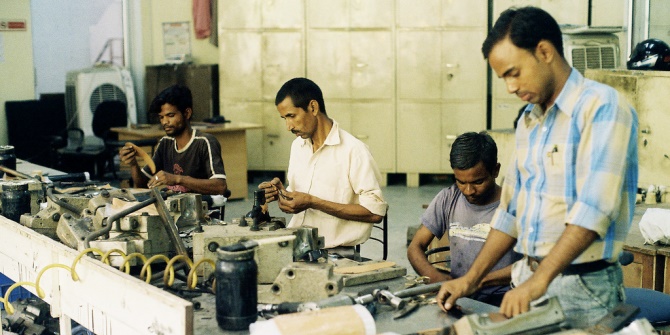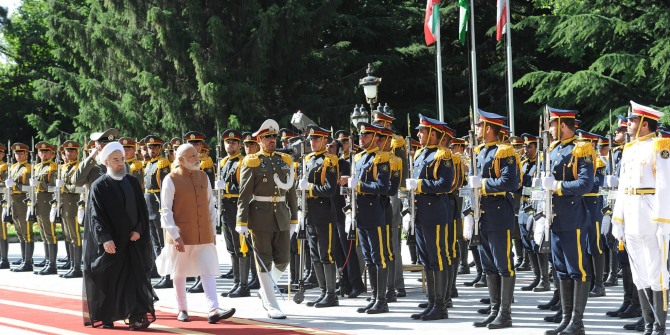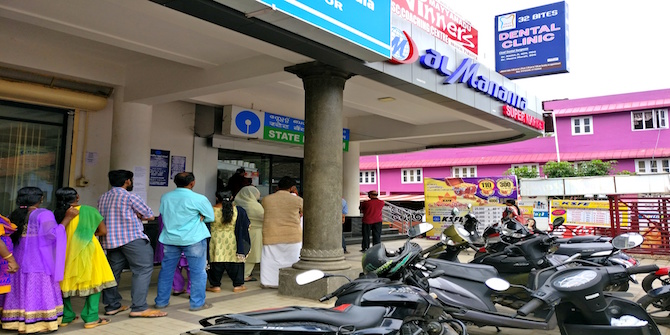 Egypt can learn from the Indian experience in including the poor in economic activities and enhancing social justice, writes Ziad Bahaa-Eldin. Here, he focuses on institutions using three contrasting Indian case studies to highlight how they promote social inclusion while at the same time being economically effective in their own right.
Egypt can learn from the Indian experience in including the poor in economic activities and enhancing social justice, writes Ziad Bahaa-Eldin. Here, he focuses on institutions using three contrasting Indian case studies to highlight how they promote social inclusion while at the same time being economically effective in their own right.
New Delhi, Mumbai, Ahmadabad, Jaipur—Last week I had the pleasure of visiting these four cities at the invitation of the Indian Council for Cultural Relations, an organisation affiliated to the Foreign Office, before taking part in an economic conference in New Delhi on the challenges of sustainable development.
The purpose of the visit was to observe and appreciate India’s experience in including the poor in economic activities and helping them organise and defend their collective rights, and thus further social justice. This turned out to be a rich experience, and one from which we Egyptians should learn.
India’ experience is valuable not because it has eliminated social inequalities, but because of the immense challenges it faced following independence in 1947. Mahatma Gandhi’s social revolution substantially improved social conditions, as did the largely socialist economic policies adopted by the Congress Party for nearly thirty years, the Constitutional provisions safeguarding justice and equality, and the advances made in both education and health.
Nevertheless, Indian society continued to face considerable class and social disparities. Economic liberalisation policies in the 1990s spurred growth, employment, and national wealth, making way for a young middle class that had benefited from Gandhi and Nehru’s social revolution to compete globally in industry, services, medicine, sciences, and information technology. It also gave rise to a new class of billionaires known worldwide for their lavish spending even as most residents of villages and urban slums continued to face severe poverty.
And finally the overwhelming victory in last year’s parliamentary elections by the BJP – known for its economic liberalisation policies—raised expectations for a return to economic growth (the IMF estimates that the growth rate will reach 6.5 percent next year, overtaking China for the first time), but it also renewed fears of growing social gaps.
So while India today stands on the threshold of a new era, having become a major industrial nation, nuclear military power, and a fundamental part of the global economy and trade, social disparities remain palpable.
In this article, I propose to look at India’s experience with social inclusion from an institutional perspective, i.e. by looking at three types of institutions: a charity organisation, a cooperative association, and a state-owned bank. It is worth observing that while all three institutions function within a free-market economy, they seek to organise the most vulnerable communities and integrate them into the economy on a collective basis, thus empowering them with a bargaining power and economic heft and limiting big corporations’ monopoly over opportunities, resources, and the returns on economic growth.
The first institution is a charity organisation created in Jaipur 40 years ago, making prosthetic limbs for those who have lost their legs to work accidents, mines, or diabetes. But this is no ordinary philanthropic group. Instead it’s a unique social experiment that demonstrates the difference between benevolent pity and empowerment of the poor.
The association invented a cheap, simple technology to manufacture prosthetic limbs, known worldwide as the “Jaipur Foot”, and last year alone, it fitted 60,000 limbs, offering all its services for free. It also allows recipients of the prosthetics to watch for themselves as their new limb is made in the workshop.

Over the past 20 years, the organisation has helped more than 1.5 million people regain their mobility, and with it their human dignity and capacity to work and support a family. This is a charity that functions as a social movement, not only treating the disabled, but helping to free them of poverty and want, and it is an experiment that can be replicated with minimal resources. In fact, at the end of my visit, the organisation’s director offered to set up a one-month camp for the fitting of prosthetic limbs in Egypt, or possibly establish a permanent workshop, if the Egyptian authorities showed interest.
The second institution is AMUL dairy cooperative, and it is one of the most successful businesses in India. Established in 1946 in Anand, near Ahmadabad, it helps small farmers – men and women – sell their surplus milk for a fair price. Today the cooperative has more than three million members, all small producers who supply just one or two liters of milk a day. They not only benefit by selling their surplus, but also by receiving an annual dividend on their share in the cooperative, which is today the country’s biggest producer of milk, cheese, yogurt, and even ice cream, with annual sales of over $3 billion, or more than LE20 billion.
The cooperative’s success is due to a sound legal framework, social awareness of the importance of collective action, a legacy of civic action especially among women and small farmers, and state support of cooperatives without the expectation of political or partisan loyalty.
And here I should add that although the Egyptian constitution affirms the importance of cooperative ownership, we should go further and review laws on cooperatives in Egypt to allow them to more freely form and operate. Cooperatives could regulate and improve opportunities for small farmers, craftsmen, and merchants, and enable them to combine their resources and efforts and pool their economic weight.
The third institution does not belong to the world of associations and cooperatives, but to the world of banking and finance. In Mumbai, I visited the Small Industries Development Bank, a largely state-owned institution which specialises in serving small and medium industrial, commercial, and service enterprises while still functioning as a bank under the full oversight of the Central Bank.
The bank extends financial services to small producers, including accepting deposits, offering credit, helping customers with the purchase and rental of agricultural and industrial equipment, selling life and property insurance, and providing technical and marketing support. The reason why the bank is successful in serving small producers is that it relies on methods, guarantees, and speed appropriate to that type of business. Incidentally, the idea of a public-sector bank to serve small businesses was floated in Egypt and came close to implementation right after the January revolution, but was later shelved. It may be worth revisiting.
These three modalities —chosen from among several other institutions I visited—have nothing to do with social protection programs funded by the state. Their genius is that they rely on limited funds, public participation, and the combined resources, savings, and efforts of millions of poor people and small producers, turning them into an economically effective force that can protect their own interests. And in doing so, they succeed in promoting social justice, not as charity but as a right and a driver for enduring social change.
This is all, however, predicated on certain requirements: a sound legal framework, a climate that permits freedom and independence without government restraints or suspicion, and the state’s belief that civic and cooperative action is the foundation of economic and social development. If the state and the private sector are two key props for economic development, the third is civil society and its associations, unions, and cooperative institutions. And as long as these are curtailed and remain the object of suspicion and pressure, the energies of millions of people seeking to work and produce will remain dormant, leaving little scope for social justice.
This article was first published in English on Ahram Online on 25 March and originally published in Arabic in El-Shorouq newspaper on 24 March.
Note: This article gives the views of the author, and not the position of the India at LSE blog, nor of the London School of Economics. Please read our comments policy before posting.
About the Author
 Ziad Bahaa-Eldin holds a PhD in financial law from the London School of Economics. He is a former deputy prime minister, former chairman of the Egyptian Financial Supervisory Authority and former chairman of the General Authority for Investments.
Ziad Bahaa-Eldin holds a PhD in financial law from the London School of Economics. He is a former deputy prime minister, former chairman of the Egyptian Financial Supervisory Authority and former chairman of the General Authority for Investments.







